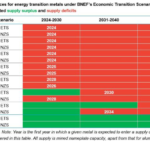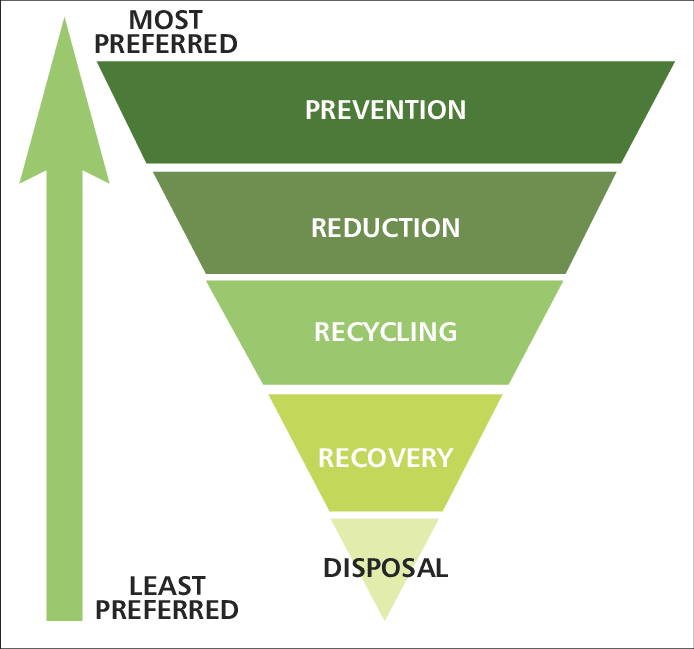Facing The Receipt Waste Problem We Have Today 🧾
Energy Disrupter
Receipt Waste 🧾: Receipts have been around for as long as we can remember. Through the years, they have transformed and evolved to conveniently provide proof of transaction for the goods or services we purchase. However, even with all the benefits of acquiring a physical receipt, these small pieces of thermal-printed paper have steadily become environmental nightmares. In this blog, we cover the latest shocking research studied by the University of Sydney and how we can make a change to combat this receipt waste problem we have in our hands.
No one refutes the usefulness of a receipt – certainly not us. In fact, we can enumerate the uses of acquiring a receipt from a goods or service purchase.
- Proof of Purchase: Receipts act as proof of purchase, helping in returns, exchanges, or warranties. They validate transactions and serve as evidence of buying a product or service.
- Expense Tracking: For individuals, receipts can be vital for tracking expenses. Continuing the first point, they also help in budgeting, accounting, and organising finances, especially for business expenses that might need to be reimbursed or filed for tax purposes.
- Record Keeping: Receipts provide a record of transactions, aiding in keeping track of purchases, especially for items with warranties or for business expenses that need to be documented for accounting purposes.
- Legal and Consumer Protection: In some cases, receipts are required for legal or consumer protection reasons. They can be necessary for refunds, exchanges, or in case of disputes with a merchant.
With all that said, physical receipts bring more harm than good nowadays, specifically to the environment. Check out what the University of Sydney discovered about receipt waste below.
>>Download Now: Free PDF Business Owners Guide To General Waste Bin Services
The receipt waste problem we currently face
Recent research uncovered that Australia churns out a staggering 10.6 billion paper receipts that eventually turn to waste every year. These receipts, coated with harmful chemicals, pose a significant problem for the environment as they can’t be recycled. This startling revelation highlights the toll this practice takes on our surroundings.
The study, titled “The Life Journey of an Average Receipt,” delved into the environmental impact of this rampant receipt printing. Shockingly, printing these paper receipts contributes to the production of 96,227 metric tonnes of carbon annually, akin to having 20,918 cars constantly on the roads. Additionally, the energy used in this process could power approximately 18,500 homes.
The research, funded by a grant from CSIRO, was conducted by the University of Technology Sydney (UTS) and commissioned by Slyp, an Australian startup. Slyp is focused on reducing the influx of paper receipts that end up in landfills.
They propose a solution involving digital receipts linked to banking or business apps, effortlessly delivered through smart devices. This shift aims to curb the excessive use of paper receipts, lessening the burden on the environment and promoting a more sustainable approach to record-keeping and transactions.
“UTS did a six to 12-month research project, it was extremely thorough, on the lifecycle of the receipt supply chain. It was certainly more alarming than what we anticipated and demonstrates the reason for change, and change takes a village or an army, as they say,” Slyp CEO Paul Weingarth mentioned to Yahoo News Australia about the world-first study.
“It’s a lot of paper”: alarmingly true
Picture this: if you lined up all the receipts Australia churns out in a year, they’d stretch a mind-boggling 2.95 million kilometres. To put that into perspective, it’s enough to reach the Moon nearly 8 times over! Each of those receipts, averaging about 27.85 centimetres long, adds up to create this astonishing trail of paper. This visual shows just how enormous our yearly receipt production is, painting a vivid picture of the scale of this paper trail. “It’s a lot of paper,” Weingarth exclaimed.
Another harmful effect of receipt waste
This study didn’t just look at the environmental impact of paper receipts; it also checked out how sustainable digital options measure up. And guess what? The differences were pretty surprising!
When it comes to producing paper receipts in Australia each year, the report found some hefty numbers: 150,462 trees are used up, along with a whopping 1.56 billion litres of water.
That’s not all – the process also chews through 96,227 metric carbons of energy and 104.7 million kilowatts of energy. Now, let’s compare that to digital receipts: zero trees, no water, 3,037 metric carbons of energy and just 7.1 million kilowatts of energy. The contrast is huge!
Here’s another shocker: those receipts we get from shops? Most of them have thermal paper-coated prints with a chemical called Bisphenol A (BPA). This coating makes them impossible to recycle and, get this, 1,000 times more toxic than the BPA in a regular plastic bottle.
It’s a big deal, considering how widespread these receipts are and the impact they have on the environment.
The stuff in thermal paper receipts isn’t just bad for the environment; it might not be great for our health either. There’s a chemical called BPA in there that could mess with our hormones.
Research shows BPA might directly cause illnesses like higher blood pressure, problems with having babies, type 2 diabetes and heart issues.
Good news, though – some stores like Coles and Woolworths have already said bye-bye to the BPA coating in their receipts. In addition, company titans such as Amazon, Google, NAB, Chemist Warehouse and the Australian Retailers Association are teaming up with Slyp. They’re all on board with Slyp’s plan to swap out those paper receipts for digital ones, aiming for a healthier and more environmentally friendly way of doing things.
The solution? Go “receiptless”
No, we do not mean not getting your receipt at all. Going “receiptless” simply means not getting a physical receipt to avoid waste and its harmful effects on humans and the environment.
You can simply ask the cashier. You might suggest jotting down what you bought in a little book you carry or using a phone app to keep track. The app is even better because it’s paper-free and more convenient.
Just a quick chat with the salesperson and a few taps on your phone can help reduce paper waste while still keeping tabs on your purchases.
In addition, instead of getting a paper receipt, you can ask the store to email it to you. That way, there’s zero waste and no need to worry about tossing receipts.
It’s an easy fix! Just give them your email address at checkout, and voila! You’ll have your receipt saved digitally, saving both paper and the hassle of dealing with physical receipts.
Problem solved, no waste involved!
Contact Waster right now for your waste and recycling needs now!
Does your Australian-based business need waste and recycling services? If so, then you have come to the right place!
Please call 1300 WASTER (1300 927 837). You can also email us at enquiries@waster.com.au if you have any further questions. Find the best deals in terms of waste and recycling pricing and services!


















